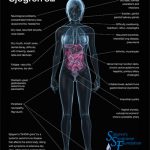NEW YORK (Reuters Health)—New consensus-based recommendations from the European League Against Rheumatism (EULAR) address the management of Sjögren’s syndrome with topical and systemic therapies.
Sjögren’s syndrome presents with a broad spectrum of clinical manifestations and autoantibodies, including antinuclear antibodies (the most frequently detected), anti-Ro/SS-A (the most specific) and cryoglobulins and hypocomplementemia (the main prognostic markers).
For decades, the management of Sjögren’s syndrome has been based on symptomatic treatment of sicca symptomatology and broad-spectrum immunosuppression for systemic disease, yet there is little information on the relative efficacy and safety of the available therapeutic options.
Dr. Manuel Ramos-Casals from Hospital Clinic of Barcelona, Spain, and colleagues on the EULAR-Sjögren Syndrome Task Force reviewed the existing evidence and used a Delphi procedure to develop consensus recommendations for the management of Sjögren’s syndrome.
Three general principles underlie a dozen specific recommendations:
- Patients with Sjögren’s syndrome should be managed at, or in close collaboration with, centers of expertise following a multidisciplinary approach;
- The first therapeutic approach for dryness should be symptomatic relief using topical therapies; and
- Systemic therapies may be considered for treatment of active systemic disease.
After evaluation of salivary gland function, treatment for oral dryness should include nonpharmacological stimulation for mild dysfunction, pharmacological stimulation for moderate dysfunction and saliva substitutes for severe dysfunction, the authors advise.
Ocular dryness should be treated first with artificial tears and ocular gels/ointments, followed by topical immunosuppressive-containing drops and autologous serum eyedrops for refractory or severe ocular dryness.
Musculoskeletal pain can be managed with analgesics or other pain-modifying agents while balancing their potential benefits and side effects.
Treatment of systemic disease should be tailored to organ-specific severity using the EULAR Sjögren’s syndrome disease activity index (ESSDAI) definitions, according to the report, online Oct. 31 in Annals of the Rheumatic Diseases.1
As a general rule, the systemic organ-specific therapeutic approach should consist of the sequential or combined use of glucocorticoids, immunosuppressive agents and biologics.
“The task force is convinced that adhering to these recommendations, including shared decision making, assessing disease activity regularly with the ESSDAI instrument, and applying the sequence of drugs as proposed, will improve overall outcomes in a clear majority of patients with Sjögren’s syndrome,” the authors conclude.
“New research information on treatment strategies, predictive markers, and other aspects will soon become available and will probably require an update of the recommendations in coming years,” they add. “Until then, we hope that the current recommendations will be broadly applied in clinical practice and/or serve as a template for national societies to develop local recommendations.”
